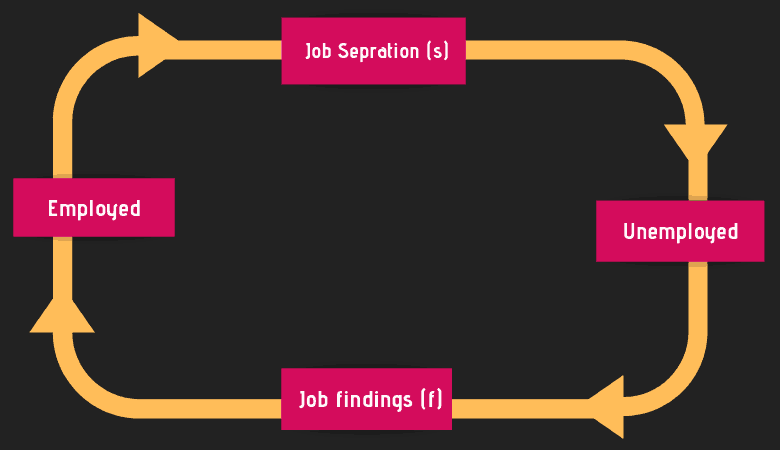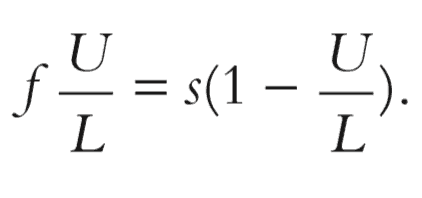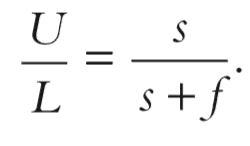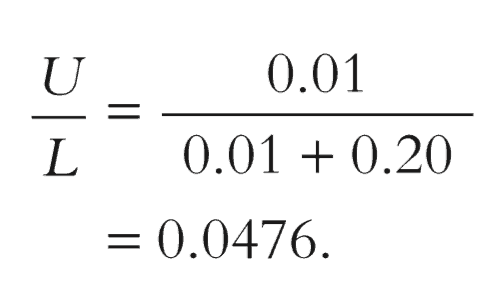The economy’s natural rate of unemployment refers to the rate of unemployment that the economy normally experiences. The economy always has some unemployment and that the amount changes from year to year.
The unemployment rate never falls to zero; instead, it fluctuates around the natural rate of unemployment.
Breaking down Natural Rate of Unemployment
Every day some workers lose or quit their jobs, and some unemployed workers are hired.
This flow determines the fraction of the labor force that is unemployed. In this lesson, we develop a model of labor-force dynamics that shows what determines the natural rate of unemployment.
We start with some notation. Let L denote the labor force, E the number of employed workers, and U the number of unemployed workers.
Because every worker is either employed or unemployed, the labor force is the sum of the employed and the unemployed.
L = E + U
In this notation, the rate of unemployment is U/L.
To see what determines the unemployment rate, we assume that the labor force L is fixed. And, focus on the transition of individuals in the labor force between employment and unemployment. This is illustrated in the circular flow image below.

Let s denote the rate of job separation, the fraction of employed individuals who lose their job each month.
Let f denote the rate of job finding, the fraction of unemployed individuals who find a job each month.
Together, the rate of job separation s and the rate of job finding f determine the rate of unemployment.
If the unemployment rate is neither rising nor falling—that is, if the labor market is in a steady state. Then the number of people finding jobs must equal the number of people losing jobs.
The number of people finding jobs is fU and the number of people losing jobs is sE.
so we can write the steady-state condition as
fU= sE
We can use this equation to find the steady-state unemployment rate. From an earlier equation, we know that E = L − U; that is,
The number of employed equals the labor force minus the number of unemployed. If we substitute (
fU= s(
To get closer to solving for the unemployment rate, divide both sides of this equation by L to obtain

Now we can solve for U/L to find

This equation shows that the steady-state rate of unemployment U/L depends on the rates of job separation s and job finding f.
The higher the rate of job separation, the higher the unemployment rate.The higher the rate of job finding, the lower the unemployment rate.
Numerical example.
Suppose that 1 percent of the employed lose their jobs each month (s = 0.01). This means that on average jobs last 100 months, or about 8 years.
Suppose further that about 20 percent of the unemployed find a job each month ( f = 0.20), so that spells of unemployment last 5 months on average.
Then the steady-state rate of unemployment is

The rate of unemployment in this example is about 5 percent.
This model of the natural rate of unemployment has an obvious but important implication for public policy
Any policy aimed at lowering the natural rate of unemployment must either reduce the rate of job separation or increase the rate of job finding.
Similarly, any policy that affects the rate of job separation or job finding also changes the natural rate of unemployment.
The data on the labor market also allow economists and policymakers to monitor changes in the economy over time.

The graph above shows the unemployment rate in the United States since 1960. It’s clear from the given data that the economy always has some unemployment and that the amount changes from year to year.
The normal rate of unemployment around which the unemployment rate fluctuates is called the natural rate of unemployment.
